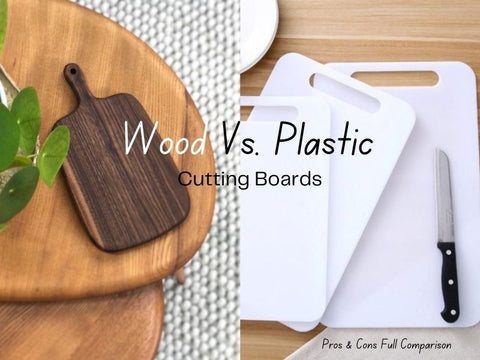
Buying a cutting board feels like a relatively small thing to do, (and in the grand scheme of life, it is), so most people don't put much thought into it. But, as it's something that you will probably use every day, it is also something that can cause a lot more pain or joy in your everyday life depending on what you prioritise.
This guide will lay out all the facts in every category that matters and share the pros and cons of wood vs plastic cutting boards to help you decide exactly which type of board is best for you.
Below is a table showing a short summary of each category and the winner of that category, in case you just want an instant answer to your question. We'd recommend reading the full guide to see all of the pros and cons to fully decide what is most important to you.
| Category: | Winner: |
| Bacteria & Germs | Wood |
| Maintenance & Care | Plastic |
| Eco-Friendliness & Sustainability | Wood |
| Experience & Versatility | Wood |
| Stains & Odours | Draw - slight advantage to plastic |
| Knife Blunting | Wood |
| Cost & Convenience | Plastic |
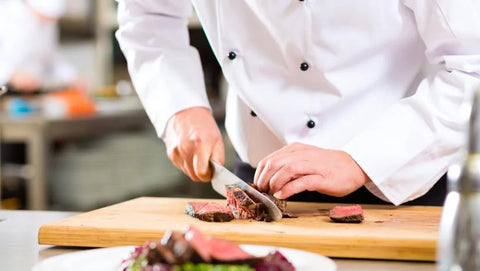
Wood vs Plastic Cutting Boards - Food Safety, Bacteria & Germs
The most important thing you will likely want to know when deciding between a wood or plastic cutting board is bacteria and food safety: Does wood or plastic harbour more germs?
- Despite what common misconceptions might lead you to think, bacteria usually will survive longer on plastic cutting boards than on wooden ones.
- This is because of wood's natural structure - instead of the bacteria staying on the surface and growing, it is absorbed into the wood grain where the bacteria and other germs will die. (Source)
- Some studies have even found that wood can even absorb and kill bacteria in just 3 - 10 minutes after being contaminated.
On the other hand, bacteria cannot be absorbed into plastic and instead can stay on the surface living in the many scratches and crevices built up over time.
Rather than be absorbed by the material where it will die, germs and bacteria on plastic boards have nowhere to go but remain on the surface and can survive and thrive.
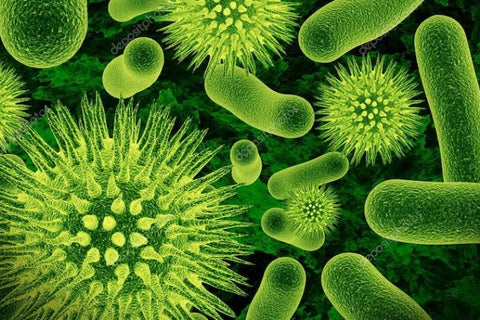
Does Wood Have Antibacterial Properties?
Yes, some species of wood have naturally occurring antibacterial oils and qualities. Acacia is one of these wood species, the oil in the wood is antibacterial and also helps towards acacia's high water resistance, which is why it's often used for wooden kitchenware and outdoor furniture.
Reseal & Repair
Wooden cutting boards can also be resealed every 6-12 months or so to maintain their vibrancy and protect the wood. Unfortunately, this can't be done for plastic boards, but they are in turn slightly less likely to get scratches and cut marks in the first place, which brings us to maintenance:

Wood Cutting Boards vs Plastic - Maintenance
Winner: Plastic boards. Plastic is easier to put in the dishwasher, will not warp as easily and is more resistant to cuts.
Wooden cutting boards will generally need more maintenance than plastic ones. Plastic boards will need little maintenance other than washing after use.
Depending on the type of wood used (more on that below) and the amount of use the board gets on a daily basis, wooden boards will do best when they are re-oiled every 6-12 months.
This is a very easy 5-minute job, you can even make your own wood sealant from ingredients at home - like a 1:3 mix of olive oil and beeswax.
Do you have to reseal wood cutting boards? Let's be clear about something, you do not have to re-oil or reseal your wooden cutting board, but it will definitely help it last longer, reduce the chance of any cracks and warping and keep the vibrant colour in the wood for longer too.
Washing & Drying | Wood Vs Plastic Cutting Boards
Plastic cutting boards are more convenient in the sense that you can throw them in the dishwasher at any temperature or leave them soaking in water for days on end (still not recommended) without having to worry too much.
Saying that, wooden cutting boards can be prone to warping and potentially even showing cracks and losing some colour if you dishwash them at a high heat or leave them to soak for long periods of time.
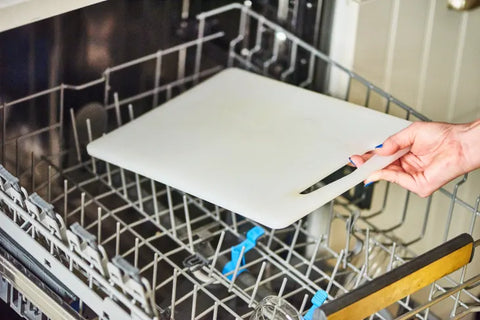
Can You Put Wooden Cutting Boards in the Dishwasher?
It's generally not advised to put wooden boards in the dishwasher. If you do so, do it rarely and on the lowest heat/time setting, rather than after every use. You can instead handwash a wooden board with hot water and soap and allow it to air dry after use.
Of course, with great convenience often comes terrible biodegradability. And unfortunately, plastic cutting boards eventually need to be thrown away due to their non-maintainable nature, they will also take a very long time to decompose, not to mention the chemicals that can be leached into the ground as a result. This leads us to another important factor; Eco-friendliness and sustainability.
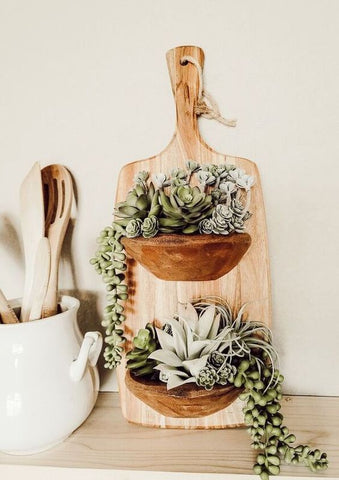
Wooden Boards vs. Plastic: Eco-Friendliness & Sustainability
Winner: Wooden boards. Wood is a natural material that is sustainable to produce and biodegradable. It can also be easily repaired (such as re-oiling or sanding) where plastic boards cannot.
When it comes to eco-friendliness and sustainability, the argument of wood versus plastic cutting boards becomes a pretty short one - the wooden cutting board will come out on top as a renewable natural material compared with a synthetic material needing a lot of processing, chemicals and time to decompose.
In particular, going for cutting boards made of hardwood species such as acacia, ash or even bamboo will be among the most eco-friendly choices. If properly looked after, a wooden board can last many lifetimes and even be passed down among generations. When it has met its day, it will biodegrade in about (3-5 years) to fully return its nutrients to the earth.
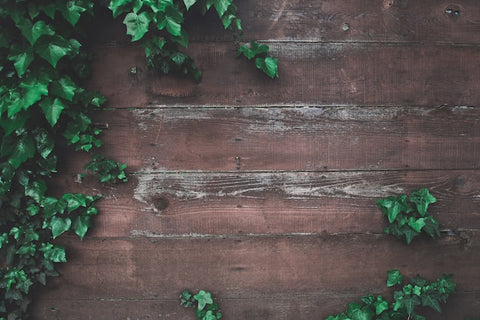
In contrast, plastic cutting boards cannot be repaired or resealed and can build up lots of scratches and knife marks over time where they will eventually need to be replaced and inevitably end up in a landfill (or the ocean) taking hundreds to thousands of years to decompose.
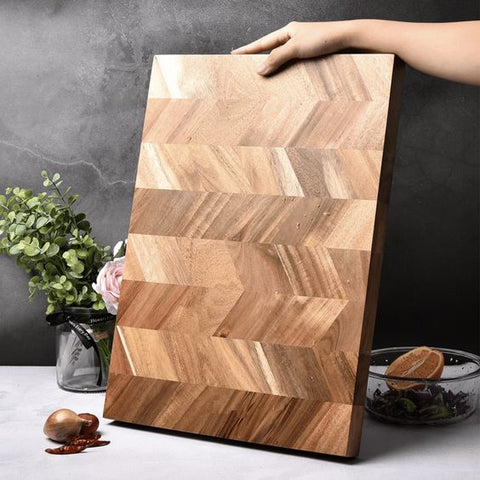
Wood vs Plastic Cutting Boards: Versatility, Experience & Aesthetics
Winner: Wooden boards. Wood's natural appeal and aesthetics make wooden boards more versatile in how you can use them - whether it's for preparing, serving, eating or decorating.
The experience of using a plastic cutting board, which is purely utilitarian, is very different to using a wooden board, which can be used as a cutting board, serving board or charcuterie board all in the same evening.
Using and physically touching a natural material also has a calming effect on people, and we are more likely to have a certain connection with a natural material rather than a synthetic one.
Wood is versatile, you can both prepare and serve a meal on the same wooden board, something which you cannot really do on a plastic one. A wooden board will become a part of your everyday life, where a plastic one will be shunned away in the cupboard until it's chopping time...
But, speaking of chopping, what about odours and stains?
Wooden vs. Plastic Cutting Boards: Stains & Odours
Winner: Tie/draw, with a slight advantage to plastic boards. Plastic boards will typically stain a bit less and can be washed in the dishwasher. Odours are also slightly less likely to stay on plastic boards after the first wash.
Cutting boards go through a lot, they're right in the centre of everything when cooking up a storm. They get sauces spilled on them, tomatoes and meats chopped on them, garlic crushed and onions diced... all of these foods can leave behind stains and odours that can linger.
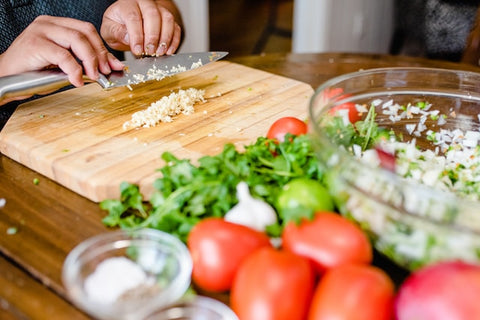
So, do stains and odours stay on longer on wood or plastic?
The answer is: It depends. In general, it will depend on the smoothness of the surface on the cutting board. Many plastic boards will have a non-slip texture which can harbour smells and stains for longer despite several washes in the dishwasher - saying that, they are easier to wash in the dishwasher than wooden boards.
If the plastic is smooth and durable (like Polypropylene (PP) plastic), it should not stain or keep odours too easily, except for in any grooves and knife marks where they can build up.
Like bacteria, odours can be absorbed into wood where they will die off and fade away. Stains will be easier to wash off a well-maintained wooden board than a neglected one. It can sometimes take more than one wash to get a particularly stubborn stain out of a wooden board.
For persisting stains, you can always sand down the area a little and re-apply some food-safe wood sealant to make them good-as-new again.
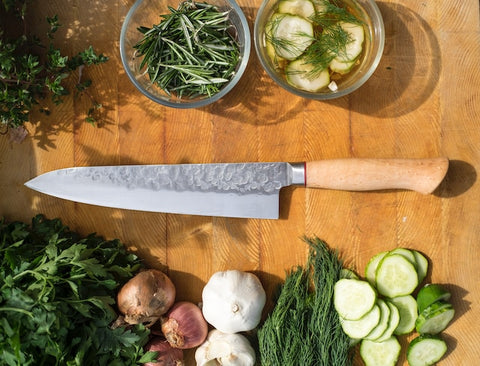
Wood Cutting Boards vs. Plastic: Knife Blunting & Sharpness
Winner: Wooden boards. Wood is a softer more malleable material, so it doesn't blunt knives as fast as plastic boards do, saving you time and money from sharpening or buying new kitchen knives.
Another important factor in deciding which type of cutting board to use, is how it affects your kitchen knives' sharpness or blunting.
Wooden Cutting Boards Pros & Cons:
Pros: Wood's malleable surface means that it is less likely to blunt knife blades compared to hard plastic surfaces. This means that your kitchen knives will keep their sharpness for longer, saving you from frequent knife sharpening.
Cons: While wood is gentle on knives, wooden cutting boards can be more susceptible to developing cut marks and grooves, especially when used heavily or with improper cutting techniques. Wooden boards redeem themselves a little here though - thanks to the fact that wood can be repaired relatively easily if needed. If you have a board with a very severe cut or crack it can be easily sanded down and/or filled.
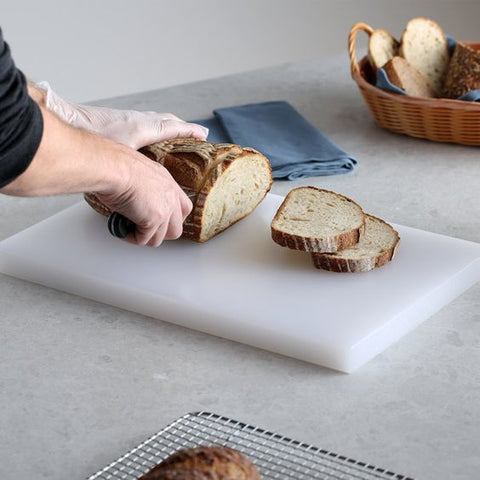
Plastic Cutting Boards Pros & Cons:
Pros: Plastic cutting boards are, in general, more resistant to knife marks. As a harder material, plastic boards will maintain a smooth surface for a longer time because the knife will need more pressure to make a mark on plastic than on wood.
Cons: What’s good for the board is not necessarily good for a knife - because plastic boards generally have a harder surface, plastic is also harder on knives compared to wood, resulting in faster blade blunting. The small plastic particles produced during cutting can also end up in your food, which is less than ideal.
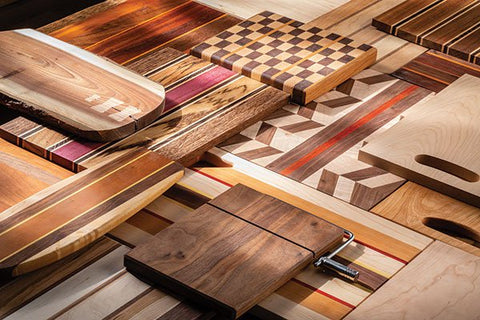
Which Type of Wood is Best for Cutting Boards?
There are many species of wood that make great cutting boards, particularly if you're using the end grain.
The best type of wood for a cutting board is a tough hardwood such as black walnut, acacia or maple. Ideally, you will want a species of wood that can be finished to a smooth surface, has dense water-resistant wood, and can be sustainably grown. To tick all of these boxes, we would recommend checking out these black walnut and acacia boards.
As you know, not all wood is created equally. Choosing the right wood type for your board is crucial for longevity and functionality. Here are some of the top wood choices for cutting boards:
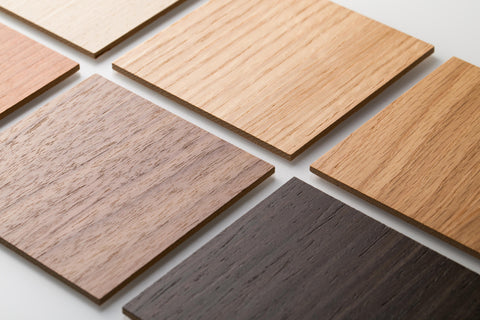
If you want to do a higher-than-average amount of chopping, or you’re a particularly enthusiastic dicer, you may want to consider looking for a board that is made of end-grain, as it will hold up even better to knife marks than plastic boards without as much of the blunting effect.
- European Walnut & Black Walnut: With its density and strength, walnut wood resists deep knife marks and warping. It’s also unique to many other types of wood in the rich, dark chocolate-brown colouration that adds a touch of luxury to your kitchen.
- Maple: Renowned for its hardness and tight grain, maple is a popular choice for its durability and resistance to moisture.
- Acacia: A hardwood with a vibrant golden colour and dark, striped grain, acacia wood is also known for its high antibacterial and antimicrobial properties. This is thanks to the naturally occurring oil in the wood which also makes acacia one of the most water-resistant types of wood available.
- Cherry: This is a moderately hard wood with rich colouring, cherry wood is also a good choice for functionality and aesthetics.
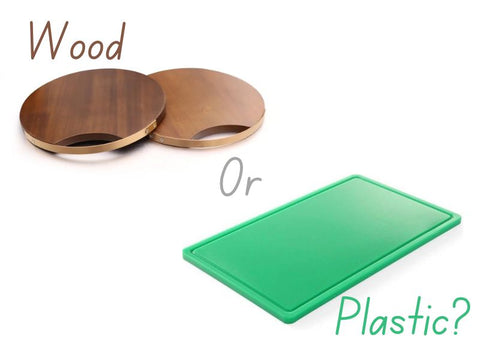
Wooden vs. Plastic Cutting Boards: Which One is Better?
Winner: Whichever qualities are more important to you.
All in all, the board that you go for will depend on personal preferences and what you prioritize.
- If affordability, convenience and dishwasher-ability are what you want in a cutting board - then a plastic one is probably what you are looking for.
- If you prioritize sustainability, food safety, versatility and aesthetics, then a wooden board is going to provide you with all of these.
- The tradeoffs for wooden cutting boards is that they are going to require a little more investment upfront, a little more care, and, dare we say - love. But, what they give you back in return is worth it for most people.
Read:
Shop:

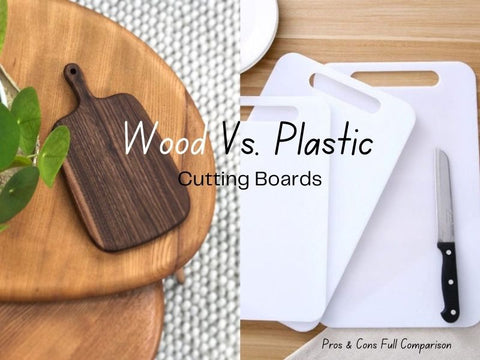
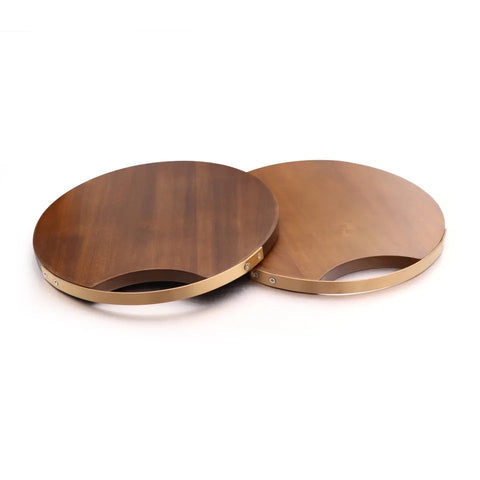
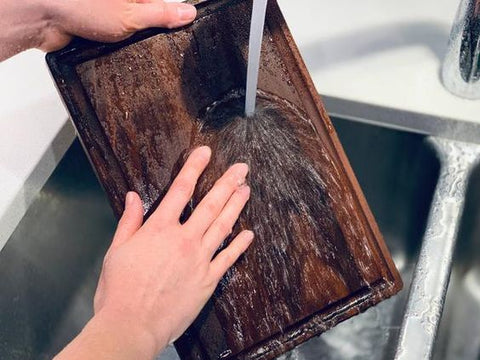
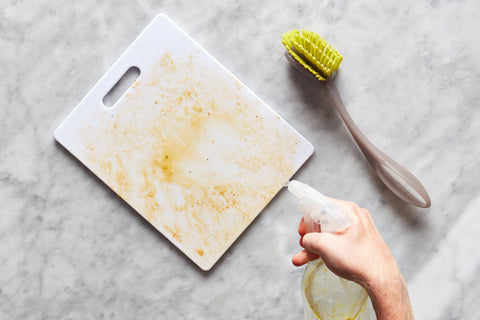
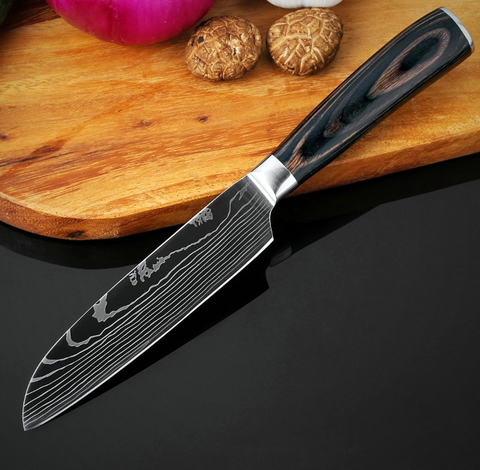
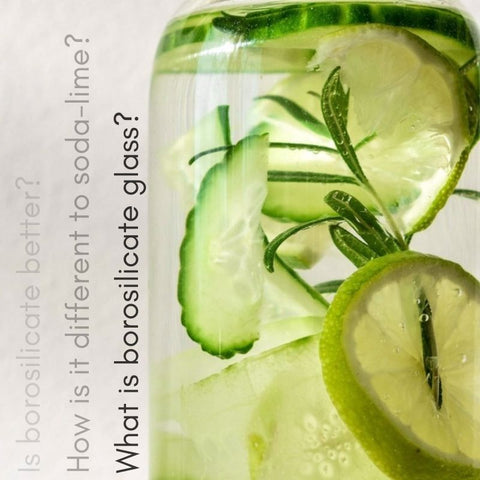
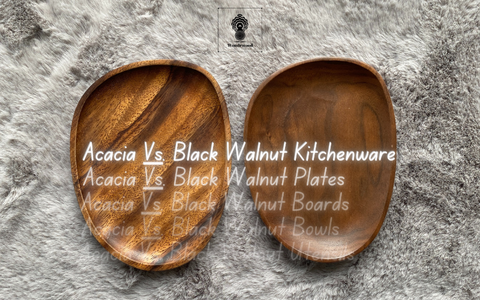
Comments (0)
There are no comments for this article. Be the first one to leave a message!